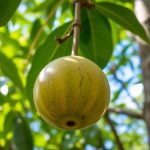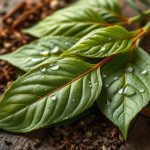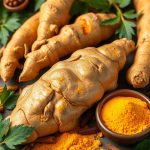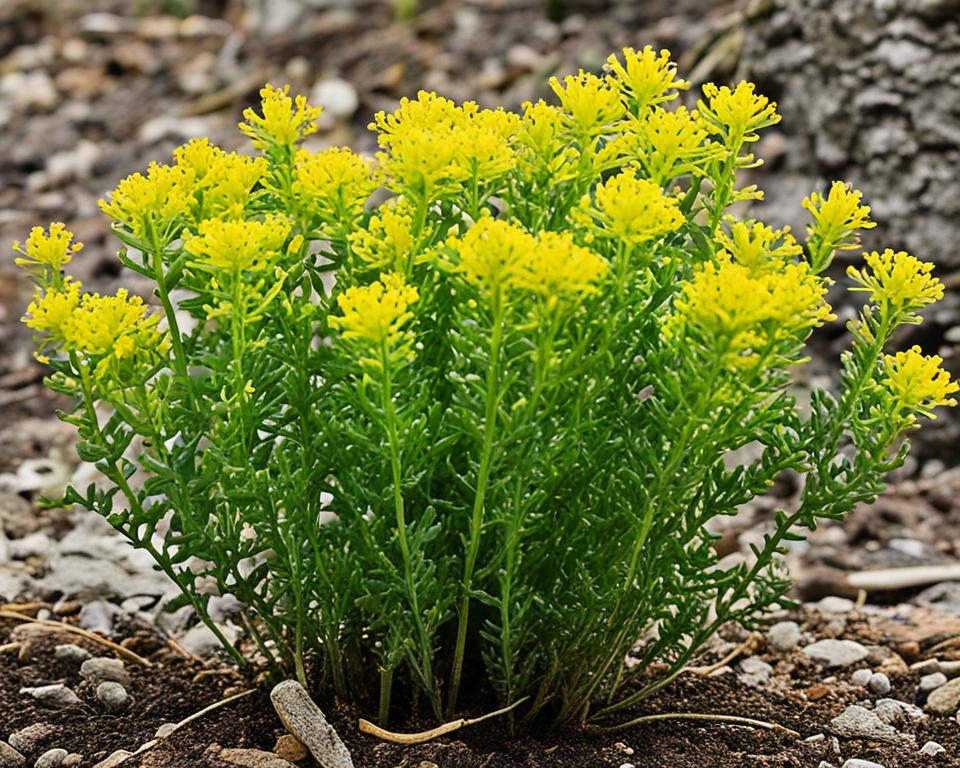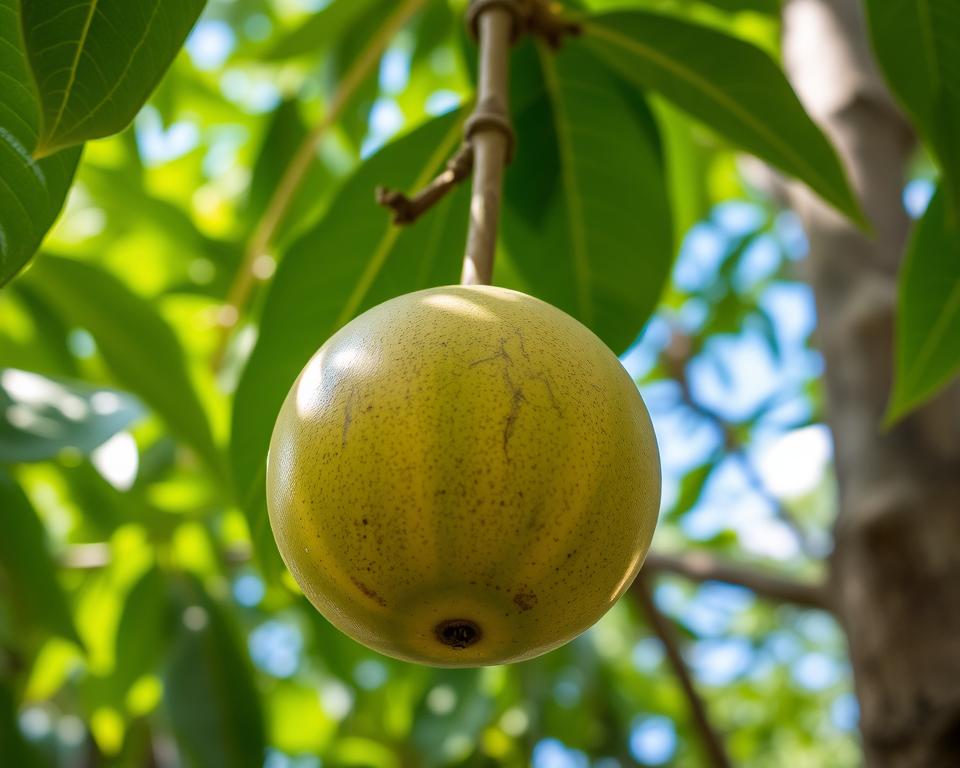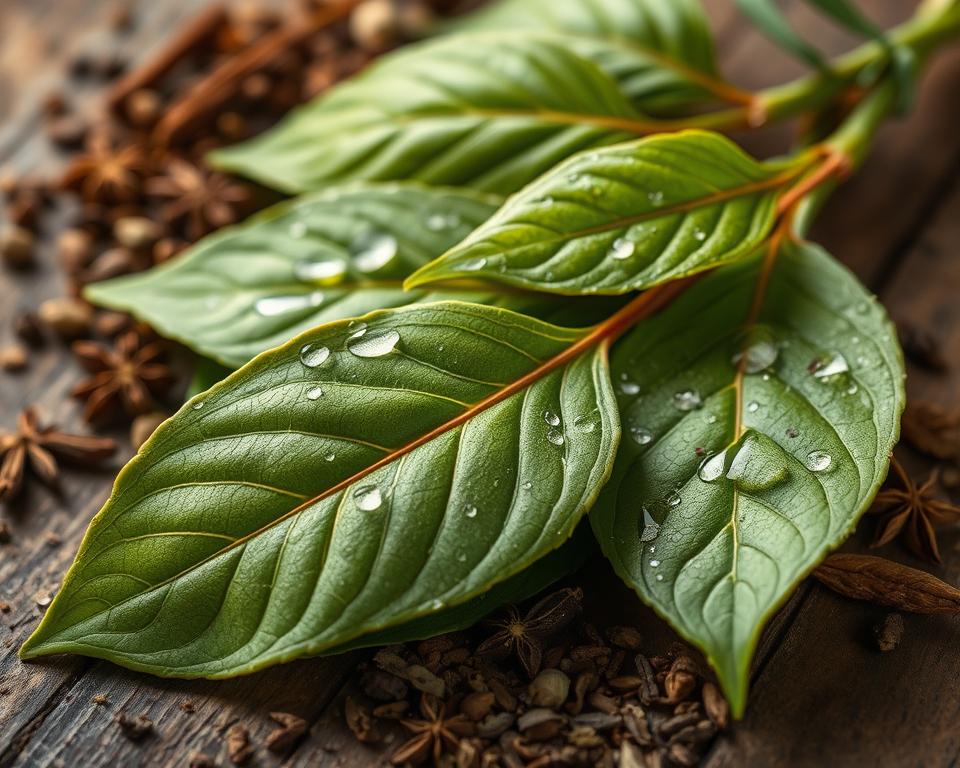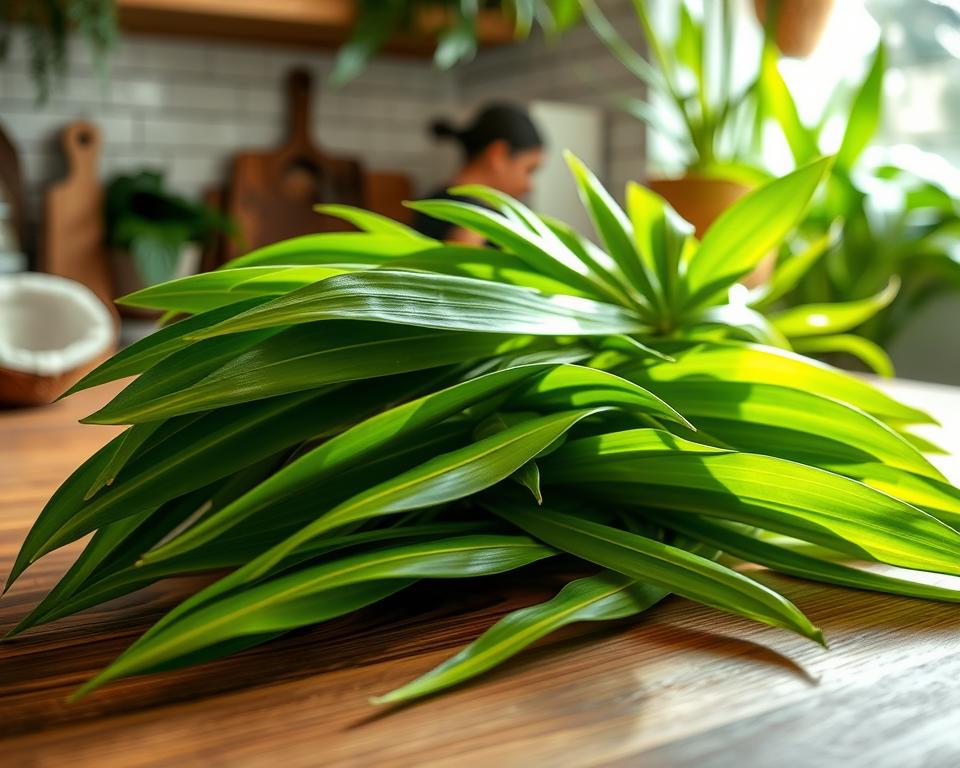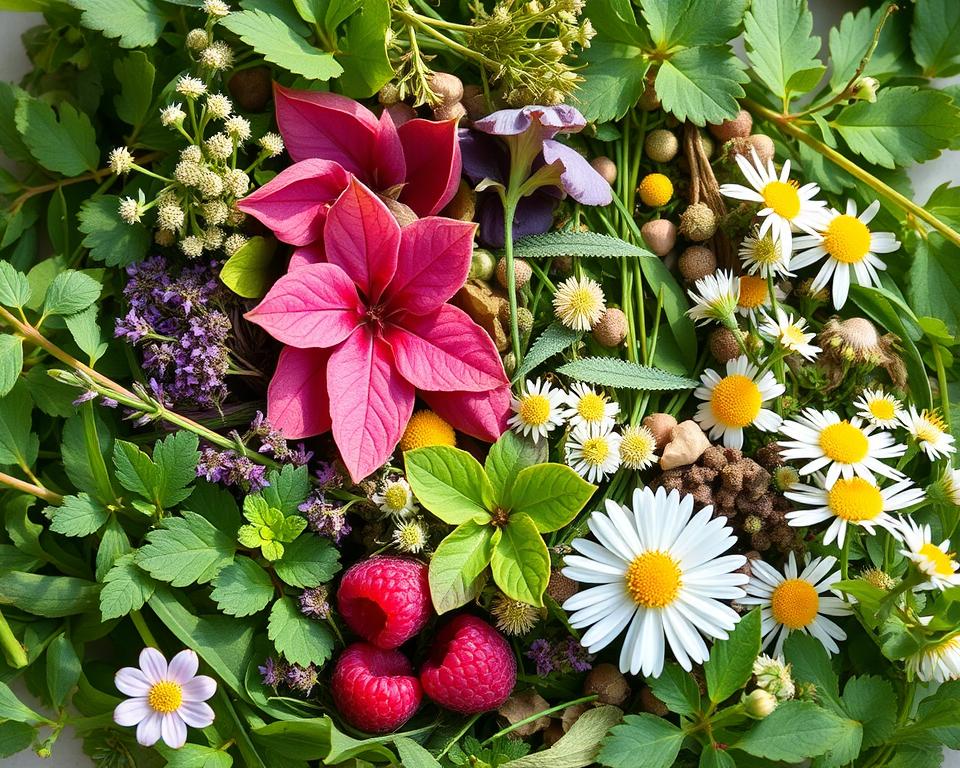Wormwood, known scientifically as Artemisia absinthium, is a fascinating herb with a long history. It has been used in medicine, spirits, and traditional remedies. This guide will cover its powerful benefits, risks, and various uses. It aims to help readers use wormwood safely and effectively.
Wormwood is also called the “bitter herb” or “grand wormwood.” It’s a perennial plant found in Europe, Asia, and North Africa. Its unique silvery-green leaves and strong scent have made it famous in cooking and medicine for centuries. Wormwood is more than just linked to absinthe; it has many uses and benefits.
Read interesting things at : tosawakan
Key Takeaways
- Wormwood is a versatile herb with a long history of medicinal and culinary use
- The herb contains a range of bioactive compounds, including the potent artemisinin
- Wormwood has demonstrated anti-parasitic, antimicrobial, and digestive health benefits
- Wormwood has been used in traditional Chinese and European folk medicine for centuries
- Proper dosage and precautions are essential when using wormwood, as it can have potential side effects
Introduction to Wormwood
Wormwood, known scientifically as Artemisia absinthium, is a fascinating perennial herb. It has been valued for centuries. People call it “grand wormwood” or “old woman” too. Its history is linked to traditional medicine and cultural traditions.
What is Wormwood?
Wormwood belongs to the Asteraceae family and grows in temperate areas of Europe, Asia, and North Africa. Its leaves are silvery-gray and smell nice. The name Artemisia absinthium comes from the Greek goddess Artemis, who found the plant’s healing powers.
Historical Significance of Wormwood
- For thousands of years, people used wormwood in traditional medicine. Ancient Greeks and Romans knew about it.
- In the Middle Ages, it was used for many health problems, like stomach issues, parasites, and mental health.
- Its strong taste and smell were key in absinthe, a popular spirit in the 19th century. But it was banned in many places because of its risks.
Now, wormwood interests modern researchers and herbalists. They look into its health benefits and traditional uses.
Botanical Profile of Wormwood
Wormwood, known as Artemisia absinthium, is part of the Artemisia genus. It’s famous for its strong bitter and aromatic taste. This plant has silvery-grey leaves and small, yellow flowers that look like buttons. Its scent is like green ginger or sage, making it a unique bitter herb.
The plant looks both beautiful and interesting. Its leaves are cut deeply, giving them a feathery look. The leaves also have a fine, silvery-grey coating. This helps the plant survive in dry places and adds to its beauty.
| Characteristic | Description |
|---|---|
| Growth Habit | Bushy, herbaceous perennial plant |
| Leaves | Silvery-grey, finely divided, lacy appearance |
| Flowers | Small, yellow, button-shaped flower heads |
| Aroma and Flavor | Strong, pungent, comparable to green ginger or sage |
Wormwood’s unique look and taste have made it popular in traditional medicine and cooking. Its special features and flavors make it an interesting plant to learn more about.
Active Compounds in Wormwood
Wormwood, also known as Artemisia, is packed with bioactive compounds. These compounds have great healing potential. The key compound is artemisinin, a strong anti-parasitic agent. It has changed how we treat malaria.
Artemisinin and Its Role
Artemisinin comes from the wormwood plant and is a top anti-parasitic compound. It’s known for fighting the malaria parasite, Plasmodium falciparum. This parasite causes the most severe malaria.
Artemisinin attacks the parasite’s cells, destroying it quickly. This makes it a key tool in fighting malaria.
Other Beneficial Compounds
Wormwood has more compounds that help it work as a medicine. Thujone has anti-inflammatory and antioxidant effects. Chamazulene fights bacteria and fungi. And, sesquiterpene lactones help fight cancer and boost the immune system.
These compounds work together in the wormwood plant. This makes it a valuable medicinal herb. It helps with parasitic infections and boosts overall health.
| Compound | Key Properties |
|---|---|
| Artemisinin | Powerful anti-parasitic, effective against malaria |
| Thujone | Anti-inflammatory, antioxidant |
| Chamazulene | Antimicrobial, anti-fungal |
| Sesquiterpene Lactones | Anti-cancer, immunomodulatory |
Wormwood: Medicinal Uses
Wormwood is a versatile medicinal herb known for its health benefits. It is famous for fighting parasites and helping with digestion.
Anti-Parasitic Properties
Wormwood is great at fighting off parasites. Its active part, artemisinin, is strong against malarial parasites and intestinal worms. This makes it a natural choice for those with parasitic infections.
Digestive Health Benefits
Wormwood also helps with digestion. It can boost appetite, improve digestion, and ease stomach issues like bloating and gas. Its bitter compounds and other phytochemicals support a healthy gut.
If you’re looking for a natural way to fight parasites or improve digestion, consider wormwood. But always talk to a healthcare professional before using it, especially if you have health issues or take other medicines.
Wormwood for Malaria Treatment
Wormwood is well-known for fighting malaria. It contains artemisinin, a compound studied for its strong anti-malarial properties. This makes wormwood a key part of fighting malaria, especially in areas where it’s common.
Wormwood works well against malaria thanks to artemisinin. This medicinal herb targets and kills the malaria parasite. Artemisinin-based treatments are now the go-to for treating malaria worldwide.
| Compound | Mechanism of Action | Clinical Outcomes |
|---|---|---|
| Artemisinin | Disrupts the parasite’s metabolism, leading to its destruction | Rapid reduction in parasite load, high cure rates |
| Other antimalarial compounds in wormwood | Synergistic effects, targeting multiple stages of the parasite life cycle | Improved treatment efficacy, reduced risk of resistance |
The WHO suggests artemisinin-based treatments as the first choice for malaria. Wormwood is a key part of this fight. As research goes on, wormwood will keep being vital in fighting a major infectious disease.
Antimicrobial and Antifungal Potential
Wormwood is a versatile medicinal herb known for its antimicrobial and antifungal properties. It is a key part of natural medicine and herbal therapies. Research shows that wormwood extracts can fight off many bacteria, viruses, and fungi. This makes it a strong natural defense against infections.
Wormwood’s power comes from its rich mix of phytochemicals, especially essential oils and bioactive compounds. These include artemisinin and thujone, which are known for their strong action against microorganisms.
Studies have tested wormwood against many bacteria and fungi. This includes Staphylococcus aureus, Escherichia coli, and Pseudomonas aeruginosa, as well as Candida albicans and Aspergillus niger. The results show that wormwood could be a natural alternative to synthetic treatments.
| Microorganism | Antimicrobial Activity | Antifungal Activity |
|---|---|---|
| Staphylococcus aureus | ✓ | – |
| Escherichia coli | ✓ | – |
| Pseudomonas aeruginosa | ✓ | – |
| Candida albicans | – | ✓ |
| Aspergillus niger | – | ✓ |
Wormwood’s uses are many, from skin treatments to fighting infections inside the body. As a medicinal herb, it has a lot to offer in health care. It’s becoming more recognized for its benefits in alternative and complementary medicine.
“Wormwood has been used for centuries in traditional medicine, and its antimicrobial and antifungal properties are now being recognized by the scientific community.”
Wormwood in Traditional Medicine
Wormwood is a versatile herb with a long history in traditional medicine. It’s used in Chinese medicine and European folk remedies. This plant helps with many health issues.
Chinese Traditional Medicine
In Chinese traditional medicine, wormwood is called Ai Ye. It’s been used for centuries to treat fever, inflammation, and digestive problems. The herb contains compounds like artemisinin, which are studied for their healing effects.
European Folk Remedies
In Europe, wormwood has been a key part of folk medicine. It helps with parasitic infections and supports the lungs. This plant’s healing uses have been passed down for generations.
Wormwood is known and valued in both Chinese and European traditional medicine. Its use shows the plant’s importance in holistic health. Ongoing research highlights wormwood’s healing properties, keeping its traditional use alive.
Potential Side Effects and Precautions
Wormwood is known for its health benefits, but it’s important to know about its side effects and precautions. Taking too much or using it the wrong way can cause problems like seizures, brain issues, and liver harm.
Before adding wormwood to your health routine, talk to health experts and follow their advice on how much to take. It’s important to be careful with this strong plant. Always put safety first.
- Potential side effects of wormwood include:
- Seizures
- Neurological problems
- Liver damage
- Precautions to take when using wormwood:
- Consult with a healthcare provider
- Follow recommended dosages
- Monitor for adverse reactions
Responsible use and safety should always be the top priorities when incorporating wormwood into your health regimen.
Wormwood and Absinthe
The story of wormwood (Artemisia absinthium) is deeply linked with the famous drink, absinthe. Wormwood was a main ingredient in making absinthe, giving it a unique taste and smell. But, the high levels of thujone in wormwood raised safety concerns about absinthe, leading to its ban in many places.
Absinthe, also known as the “Green Fairy,” was a hit in the 19th and early 20th centuries. It was loved by artists, writers, and thinkers. People thought it could cause hallucinations and other mind-altering effects because of wormwood and its thujone content.
“Absinthe is the aphrodisiac of the soul. The green fairy is the only true fairy.”
– Oscar Wilde
Now, studies show that traditional absinthe didn’t have enough thujone to be dangerous. So, many countries have lifted the ban on absinthe. Today, it’s back in style among cocktail lovers and experts.
Wormwood is famous for its link to absinthe, but it has many other uses. It’s been used in medicine and cooking for a long time. Researchers and traditional healers are still looking into its health benefits.
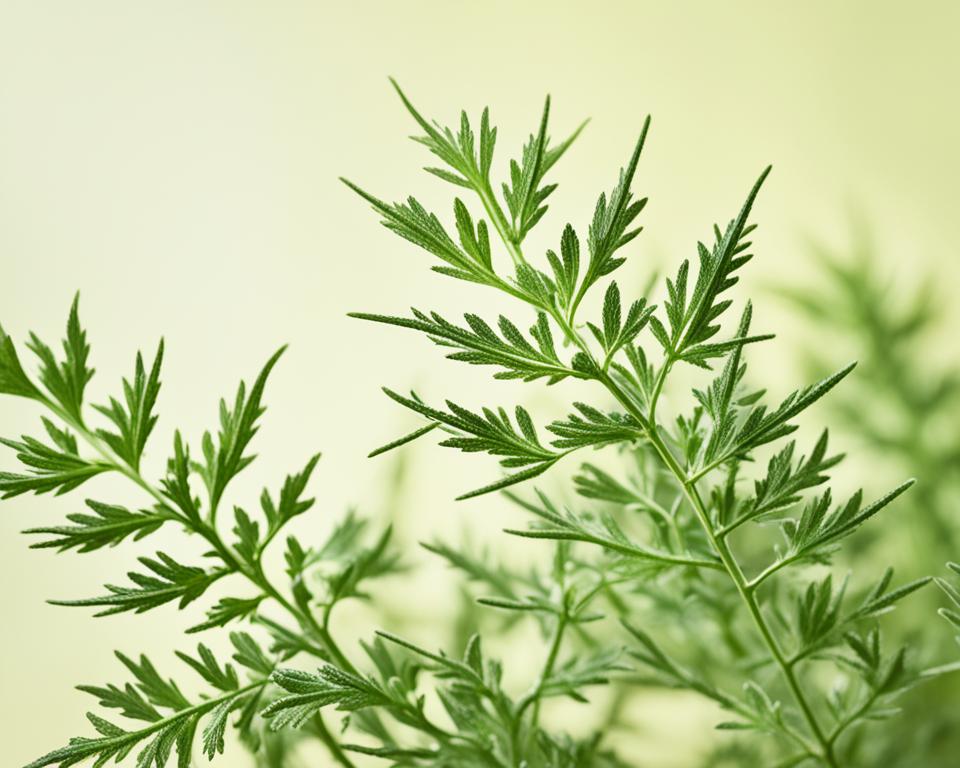
Cultivation and Harvesting Wormwood
Wormwood is a versatile herb with a rich history. It’s easy to grow in the right conditions. This plant loves temperate climates, making it great for gardens, farms, or small operations. To grow wormwood well, you need well-drained soil, lots of sun, and enough space for the plant to spread.
Harvesting wormwood at the right time is key to keeping its potency. Cut the plant just before it flowers for the best results. This way, you get the most out of the herb’s valuable compounds.
Ideal Growing Conditions for Wormwood
- Well-drained, nutrient-rich soil
- Full sun exposure, preferably 6-8 hours per day
- Spacing of 18-24 inches between plants to allow for growth
- Moderate watering, avoiding waterlogged conditions
Harvesting Wormwood for Maximum Potency
- Identify the optimal harvesting time, just before the plant flowers
- Use clean, sharp shears to cut the stems about 6 inches above the ground
- Avoid harvesting during the hottest part of the day to preserve the essential oils
- Hang or spread the harvested wormwood in a well-ventilated, shaded area to dry
- Store the dried wormwood in airtight containers, away from light and moisture
By following these guidelines, wormwood growers can get a lot of high-quality herb. This herb is great for medicine and cooking.
| Cultivation Aspect | Ideal Conditions |
|---|---|
| Soil | Well-drained, nutrient-rich |
| Sun Exposure | Full sun, 6-8 hours per day |
| Spacing | 18-24 inches between plants |
| Watering | Moderate, avoid waterlogging |
| Harvesting Time | Just before flowering |
“Wormwood cultivation is a delicate balance of providing the right growing conditions and timing the harvest to maximize the plant’s potent compounds.”
Wormwood in Cuisine
Wormwood is not just for medicine; it’s also used in some cooking. Its unique bitter and aromatic taste can make dishes, sauces, and drinks better.
In Europe and the Middle East, wormwood is added to sauces and marinades. It brings a special flavor. By mixing it with citrus, herbs, or spices, you can make a balanced taste.
Absinthe, a strong drink, is famous for using wormwood. It’s a main ingredient in absinthe, giving it a unique taste and smell.
But, be careful with wormwood in food and drinks. Too much can be harmful. Always follow the right amount and safety tips when cooking with it.
| Culinary Use | Description |
|---|---|
| Sauces and Marinades | Wormwood’s bitterness can add depth and complexity to savory sauces and marinades, complementing a variety of dishes. |
| Alcoholic Beverages | Wormwood is a key ingredient in the production of absinthe, a potent alcoholic spirit with a distinctive flavor profile. |
| Spice Blends | Wormwood can be used in small quantities as part of spice blends, adding a unique aroma and taste to various culinary creations. |
Wormwood is not as common in cooking as in medicine, but it has its place in some traditional dishes. It’s key to know how much to use and how to use it safely in cooking.
Purchasing and Storing Wormwood
Wormwood is a versatile herb with a long history and many uses. You can find it for its health benefits, cooking, or other reasons. Knowing where to buy it and how to store it is key.
Where to Buy Wormwood
You can get wormwood at specialty herb shops, health food stores, and online. Make sure to buy high-quality wormwood from trusted suppliers. Look for fresh, clean wormwood that fits your needs.
- Specialty herb shops: These stores have a wide selection of wormwood and other herbs, ensuring quality supplies.
- Health food stores: These places offer wormwood as part of their natural health and supplement options.
- Online retailers: Online platforms let you easily compare prices and product details, making it convenient to buy wormwood.
Proper Storage Methods
After buying wormwood, storing it right is important to keep its potency. Wormwood is sensitive to its environment, so bad storage can reduce its effectiveness.
- Keep wormwood in a cool, dry spot, away from sunlight and moisture.
- Use an airtight container like a glass jar or a resealable plastic bag to keep air and humidity out.
- Don’t store wormwood near strong-smelling items, as it can pick up bad odors.
- Regularly check the wormwood for mold or spoilage, and throw away any bad parts.
By following these tips, you can keep your wormwood fresh, potent, and ready for use. This is true whether you need it for health, cooking, or other uses.
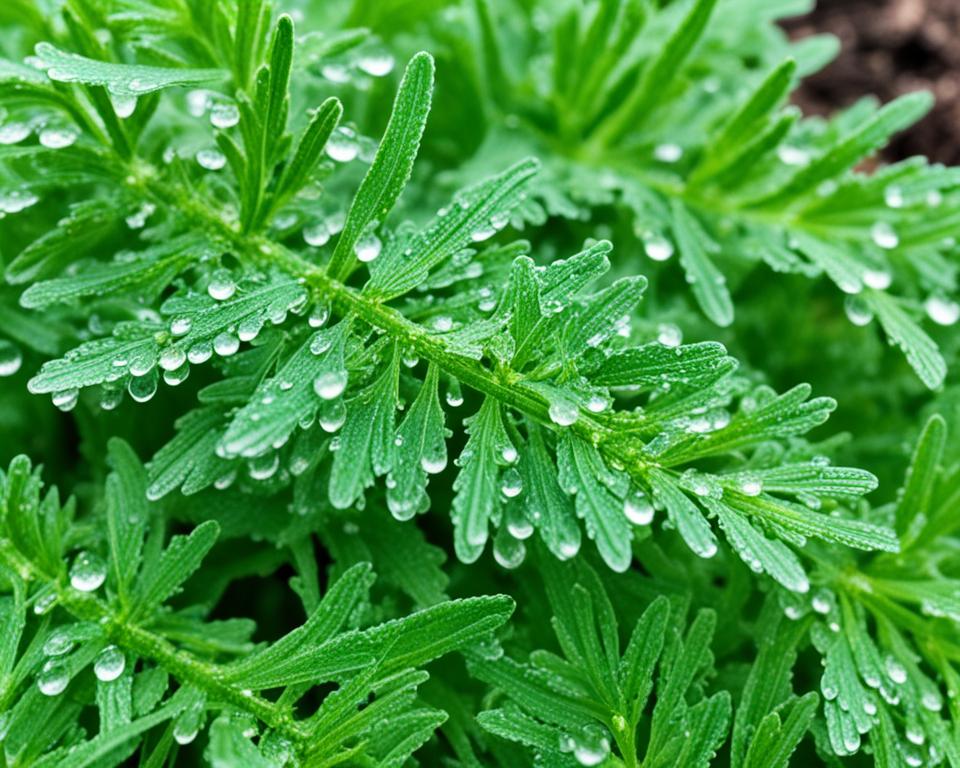
Conclusion
Wormwood is a fascinating herb with a long history and many uses. It is known for fighting parasites and malaria, and it may help with digestion and fight infections. People today and in the past have seen its value.
But, it’s important to be careful and talk to doctors before using wormwood. Using it the wrong way can be harmful. It’s key to know the risks and how to use it right to stay safe.
In short, wormwood is full of benefits for health and cooking. It has been valued for centuries. By using it wisely, people can make the most of wormwood and improve their health in a natural way.
